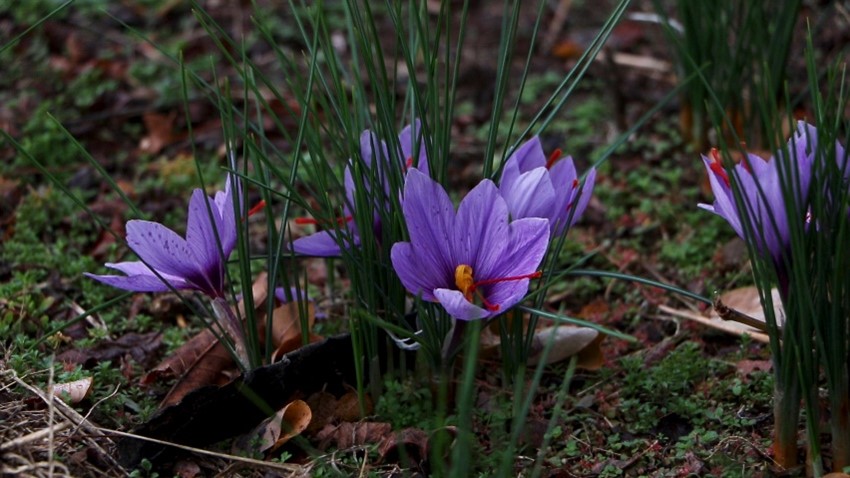
By Kim Burns, VT Agency of Agriculture, Food & Markets
In 2020, The University of Vermont (UVM) received a Vermont Specialty Crop Block Grant Program (SCBGP) award to develop Vermont’s saffron industry as a high-value crop for Vermont growers. Researchers Drs. Bruce Parker and Margaret Skinner have been studying the lucrative spice at UVM for the past seven years. The researchers have created a compelling case for Vermont farmers to consider adding saffron to their business offerings.
Saffron comes from the flower of a purple, fall-blooming crocus (Crocus sativus). The spice itself is the thread-like, orange stigma of the flower. It is harvested by separating the petals and stamens by hand. Vermont saffron is currently being sold retail for $20-75 per gram, making it the most expensive spice in the world. It is used frequently in Mediterranean dishes and as a medicinal herb.
With the help of SCBGP funding in 2017, Parker and Skinner studied how to grow saffron successfully in the field in Vermont’s cold climate. Now, they have broadened their work to conduct outreach to growers and to develop a saffron enterprise budget, which helps growers determine the revenue potential of this high value crop based on the income and expenses related to growing saffron.
Parker and Skinner believe that growers of specialty crops like fruits and vegetables could diversify their production while increasing revenue by growing saffron. Saffron can be grown both inside high tunnels and outside in the field. During the growing season, saffron is low maintenance. The beds occasionally need to be weeded and protected from wildlife pressure. Harvest takes place for a few weeks during October and November. The high price of saffron comes from the intense labor demands for harvesting and processing the spice, though when averaged over the entire crop growing season, it may not be more labor intensive than high-tunnel tomatoes.
To date, Parker and Skinner have established a network of saffron growers across nine out of Vermont’s fourteen counties to expand production and encourage exchange among novice and experienced saffron growers. They have hosted educational programs online and on site at saffron farms to increase grower knowledge about cultivation, harvest, post-harvest handling and marketing.
Parker and Skinner have surveyed saffron growers for their enterprise budgets and compared the data with the Saffron Center enterprise budget to determine the costs and potential economic returns for growing saffron in Vermont. They collected and analyzed data on customer demand for Vermont-grown saffron in the restaurant industry, the health and beauty product sectors, and at the individual household level.
Parker said, “The number of saffron growers continues to increase, slowly but steadily. That has been our goal. From the beginning we have encouraged growers to start small with saffron, and if it is the right crop for them, then they could expand production. This has ensured that they don’t invest heavily in a crop before they are ready.”
In the final months of the project, Parker and Skinner will hold several grower workshops either online or in person to further strengthen North American saffron production and to support Vermont growers. The UVM saffron website will also get updated to ensure that all the current resources are accessible. They will also conduct a grower survey to get a better idea of the status of Vermont’s saffron production.
According to Parker, there is a lot still to do to strengthen North American saffron production. First, building a market for North American saffron is critical. They will also continue to perfect cultivation practices that promote high yields in Vermont. Parker and Skinner plan to apply for more funding to further this research initiative.
To learn more about growing saffron, ongoing research, or other related initiatives, sign up for the North America Center for Saffron Research & Development’s listserv, Saffronnet, send an email to mskinner@uvm.edu to join the listserv.

